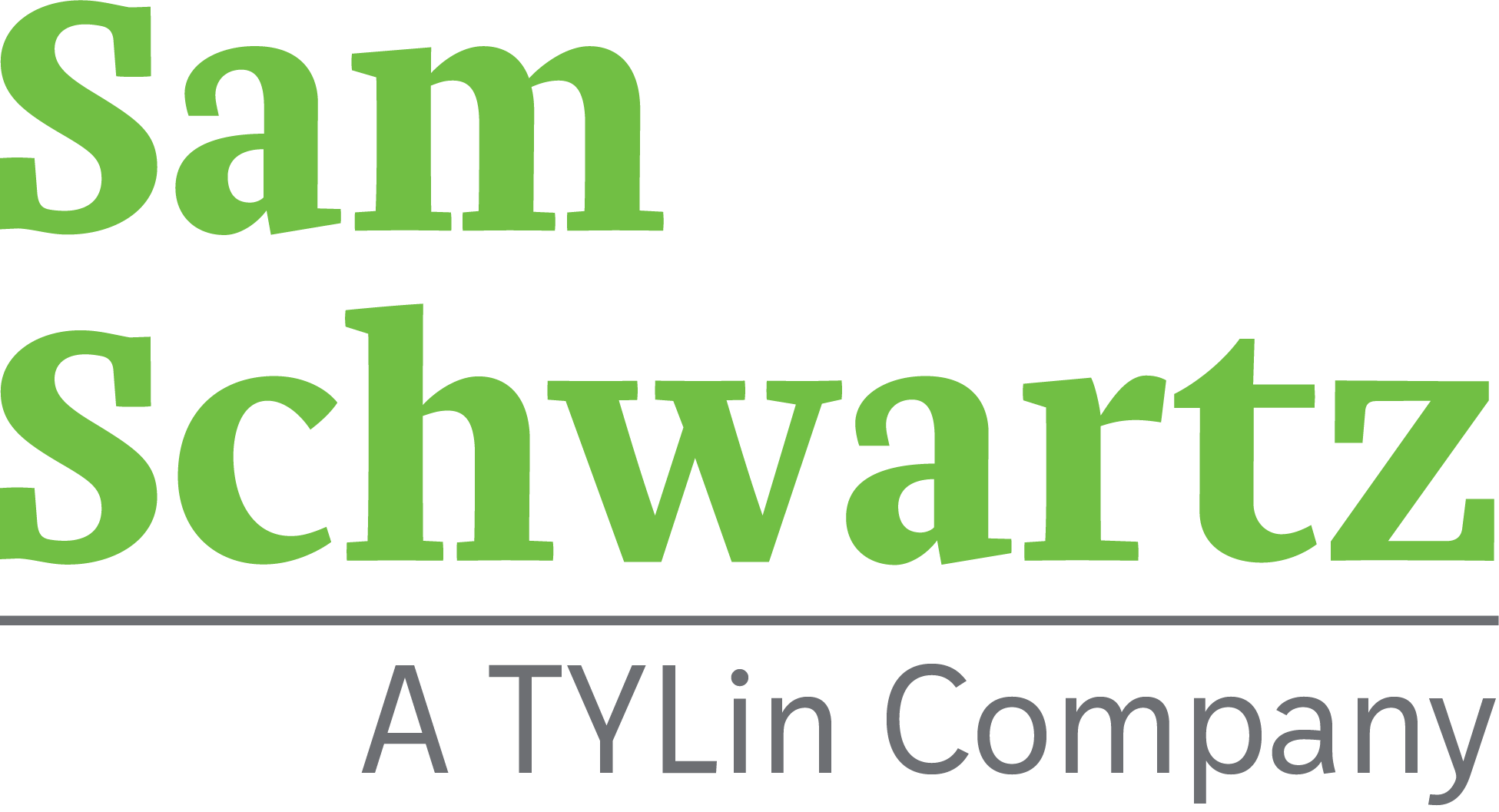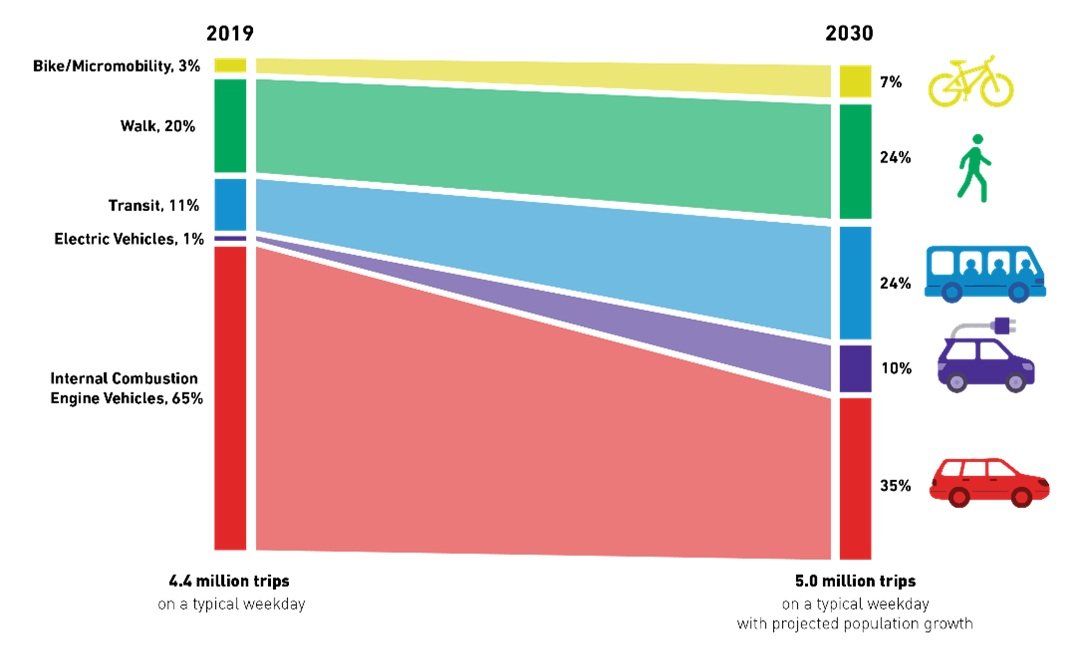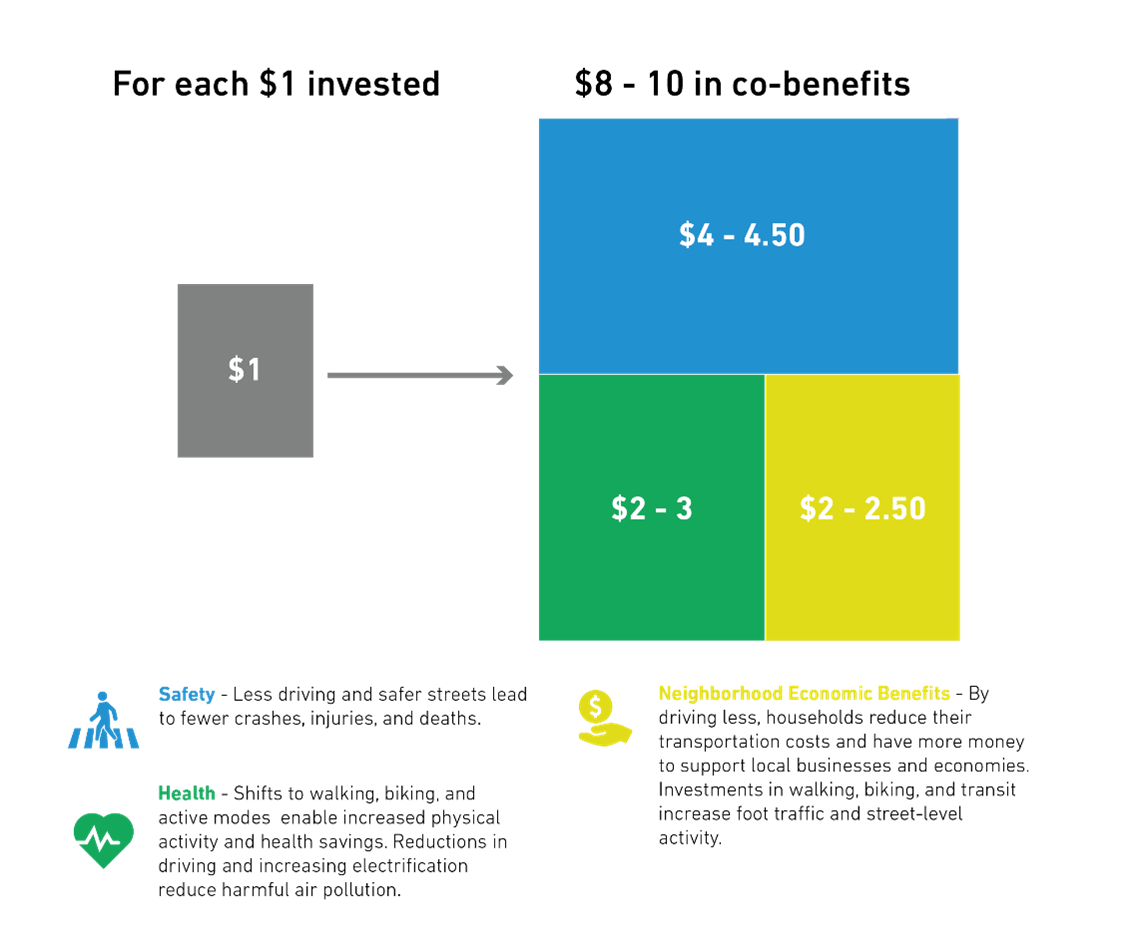Greening Transportation in the Emerald City: Seattle's Climate Change Response Framework
By Alex Hanson, Senior Associate and Director of Transportation Planning
Over the last decade, Seattle and the surrounding region made a range of investments and policy decisions to create a more multimodal transportation system—such as expanding light rail, increasing bus service, making transit more affordable, enhancing the Transportation Options Program, building more bikeways, and updating parking requirements and zoning. This has created more transportation choices for residents and workers and helped reduce driving even as the city experienced significant growth.
These investments yielded major progress, reducing per capita vehicle miles traveled 24% from 2008 to 2018, but transportation remains the largest contributor to greenhouse gas emissions in Seattle—putting the city’s Department of Transportation (SDOT) on the frontline of mitigating climate change. Recently, SDOT released its first ever Climate Change Response Framework (CCRF), its plan to enhance and expand the actions that have worked over the past decade; introduce new policies and programs that increase access to safe, affordable, sustainable transportation; and center the perspectives and needs of historically underserved communities as the agency accelerates a reduction in transportation emissions. The CCRF helps achieve the climate action goal set forth in the draft Seattle Transportation Plan (STP)—a 20-year vision for the future of the city’s transportation system.
Sam Schwartz and our partners at Cityfi worked closely with SDOT staff to develop the CCRF. The CCRF addresses multiple dimensions of the work SDOT is committed to undertaking to address the climate challenge, including detailing specific programs, policies, and investments; assessing the benefits to communities from increasing investment in walking, biking, and transit; and setting SDOT up internally to deliver on the plan’s goals. The CCRF includes numerous strategies to reduce emissions, organized into six categories:
Create a culture of climate action and optimism,
Make short trips safe, affordable, and zero-emissions,
Make it more convenient, reliable, and affordable to ride transit,
Enable use of climate-friendly travel choices,
Improve freight efficiency, and
Electrify Seattle.
The CCRF aims to accelerate much of the work SDOT has carried out over the last decade while introducing new programs to accelerate emissions reductions.
Credit: SDOT
The Sam Schwartz team collaborated with SDOT to build a rigorous, data-driven approach to identify the strategies and actions included in the plan. There are currently limited tools and resources available to understand the emissions reduction impacts of specific transportation policy changes, programs, and investments at a city level. Those that do exist are not well-attuned to Seattle’s unique local context and lack the capability to test and assess different scenarios and key factors like cost and co-benefits.
To address this gap, Sam Schwartz worked with SDOT to develop a custom-built emissions modeling and scenario planning tool dubbed the Climate Calculator. Using the Climate Calculator, our team worked with SDOT to model the climate impacts of the CCRF’s portfolio of current projects and programs, as well as a range of potential new actions. This enabled SDOT to understand the potential impacts of existing and new strategies on GHG emissions, vehicle miles traveled, and travel choices, as well as examine the benefits to communities enabled through different pathways.
The CCRF details a path to nearly double the share of trips made using sustainable modes by 2030.
Credit: SDOT
Nationally, much of the attention when it comes to reducing transportation emissions focuses on electric vehicles. Through the course of the project, we reached a multi-faceted conclusion about the role of electric vehicles in combatting climate change. First, shifting more vehicle and freight trips from polluting internal combustion engine vehicles to zero-emissions vehicles is essential to progress towards our climate goals. At the same time, many of the benefits that matter most to communities (particularly historically underserved communities)—like creating safer streets; reducing traffic crashes, injuries, and deaths; and reducing transportation costs for families and households—derive from investing in improvements for people walking, biking, rolling, and using transit. Electrification is an essential strategy, but by no means sufficient on its own, and must be complemented and supported by investments in multimodal solutions that enable healthy, sustainable, and equitable communities.
Investing in multimodal strategies to reduce transportation emissions can deliver substantial benefits to communities.
Credit: SDOT
Slashing transportation emissions drastically and immediately is fundamental to avert the most devastating impacts of climate change. New federal programs created through the Inflation Reduction Act and Bipartisan Infrastructure Law provide an unprecedented opportunity to do so. Much of that work will have to happen in cities. Seattle’s Climate Change Response Framework offers a template for how they can rigorously plan to reduce their transportation emissions and deliver the change that is needed.



